Catalogue and magic properties of the stone -->rus
CITRINE

 Description characteristic of the mineral.
Description characteristic of the mineral.
Transparent Quartz (oxide of silicon) of yellow-lemon color. Can be got at the hours-long burning (baking) at a temperature near 500oC Amethyst (lilac and violet quartz, orange-yellow turns out, gold and yellow-brown citrine) or Smoky Quartz, tenderly-yellow turns out, gold citrine). Natural citrine usually light and often not (or zonally turbidized) quite clear with the areas of white or opaque quartz and cracks. A natural citrine is very poorly painted sometimes. Crystals with the natural colouring possess weak pleochroism.
Citrine, the goldish variety of quartz, due to the durability and rich colour palette, is widely used in jeweller wares and valued as jewels color stones. It Quartz (crystal oxide of silicon) of all of tints of yellow, goldish, orange and brown colors. Sun-bright and easy in treatment, it splendidly looks at oneself in the jeweller decorations of any style, especially sparkling and reflected from the polished surface of gold. Although more dark, the orange tint of citrine which is sometimes named madeira "Wine" (in color of the same name wine) is considered more preferable, majority chooses bright lemon tints, well combining with crayon tones all the same. Scratches glass. Sometimes a citrine is mixed up with topaz (he yet harder citrine) because colors of topaz and citrine can be alike, but topaz notedly harder and high-quality dearer than quartz. In the cut kind, colouring of citrine and topaz is identical.
Citriny the natural meet enough rarely. The mine deposits of citrines, related to miaroles pegmatites and mineral mine deposits, are known in Brazil (states of Baiya, Goyas, Minas-zherays), on Madagascar, in the USA (state Colorado), Spain (province Kordova), France and Great Britain (Scotland). In the CIS the magnificent crystals of citrines of wine-yellow color were found on Ural, found out beautiful citrines in Central Kazakhstan. Transparent, well painted stone are cut and used in such jeweller wares, as brooches, ear-rings, rings and coulombs. The separate large crystals of natural citrines are cut cabochon. The less attractive and semilucent unevenly painted crystals go to making of necklaces, bangles and other It is better not to acquire citrines of rare and dear tints from unfirmness of their colouring.
Greater part of entering sale of citrines is treated the high temperature of Amethysts, smoke-coloured Quartzs or morione (black quartz, in the pitchblende). The large transparent defect-free and evenly painted crystals of citrine or too dark (up to a brownish tint) crystals usually talk about the artificial origin of stone or annealing. By sight to define, a citrine is ennobled or not, has the natural or artificial colouring, it is practically impossible. Some citrines of rare tint lose colouring in course of time. The most important - not to purchase less dear citrines at price of topazs and other dear jewels.
Natural citrines is painted usually evenly enough. If at a citrine an apex is far darker than bottom base, such citrine is probably got the hours-long annealing of Amethyst (exactly Amethysts have the expressed unevenness of colouring along a crystal and save this property after annealing).
Cost of citrines in the world market presently relatively low from a presence practically undistinctive from natural synthetic and ennobled stone. Citriny today is actively synthesized from quartz raw material and have very high jeweller quality (cut synthetic citrines can excel the best natural or ennobled analogues). Price synthetic and ennobled natural citrines identical.
From considering of safety we do not recommend to acquire in private home collections the transparent defect-free (without visible internal defects) standards of citrines and other transparent defect-free stone measuring more than 1,5 х 1,5 х 1,5 sm - them can officially assimilate to jeweller raw material and licensed type of activity. If a standard is thin (without depending on the degree of zero-defects, thinner 1,5 sm) - without depending on an area and other sizes he is not raw material for jeweller industry in principle.
Magic properties of stone.
The astrologers of dark Ages assured that the finger-ring put on for the night with a citrine gave quiet sleep, delivering from nightmarish dreams and bad ideas. In the day-time he warms the energy and body and soul. Citrine is good for the concentration of attention, concentration. Citrine is character of light, gladness and good mood. His energy is similar to a sun, to granting warmly and life. Citrine - perfect stone for adjusting of bodily condition of proprietor and his psyche. Considered that beyond measure it is especially recommended sensible and vulnerable people to carry a citrine. Being the powerful explorer of positive sun energy on Wednesday proprietor, it is instrumental in normalization of relations in family, in-process, in studies. Citrine fills with the proprietor a heat and kindness. It is a talisman of reckless people: not warming up their temperament, a citrine aims to provide them success even in ventures. Stone also talisman of speakers, prophets and very helps in trips. Citrine is a talisman and amulet charm talisman for all, who is engaged in creative labour, especially related to making anything by hands: sculptors, carvers, cabinet-maker, jewellers and other.

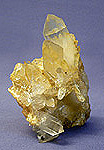
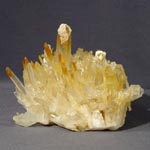
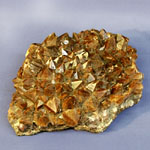
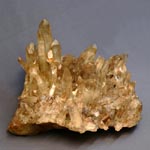
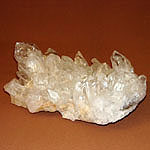
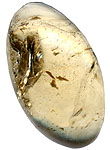


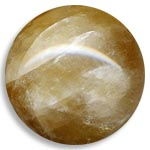

Poisonous and radioactive risky hazardous cargo stone and minerals
** - are poisonous stone and minerals (mandatory verification is in the chemical analysis laboratory + on toxicity)
** - are radioactive stone and minerals (mandatory verification on a regular dosimeter + prohibition on the opened sales in the case of radio-activity over 24 milliroentgens / hour + additional measures of protection of people)
All of rare stone are subject obligatory verification on a regular dosimeter on the possible level of radiation and in a chemical laboratory on absence default of poisonous and evaporating components, dangerous for a human people and environment nature
- Free download article Very dangerous and potentially dangerous stone and minerals are in Medical stone therapeutics, with pictures, 2010 year, format of PDF, 2.80 Mb (Presentation from scientific of author K.305 of pictures of very dangerous and potentially dangerous natural stone and minerals which on a bad motive or criminal indifference can be illegally used in criminal and "underground" "Medical stone therapeutics"). Rus langv.
A catalogue of stone is all of stone in alphabetical order
- Signs of travelling traffic lane markings - to transportation and marking of dangerous load Policy Rules
- Rules of Road Transportation of Especially Dangerous Loads, Hazardous cargo commodity, signs index plate
